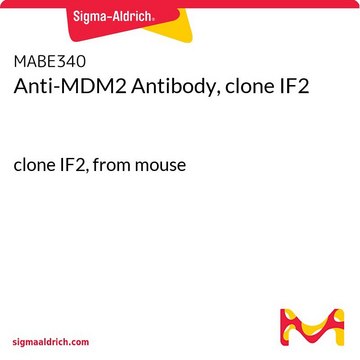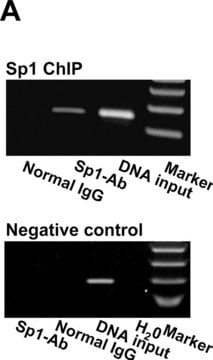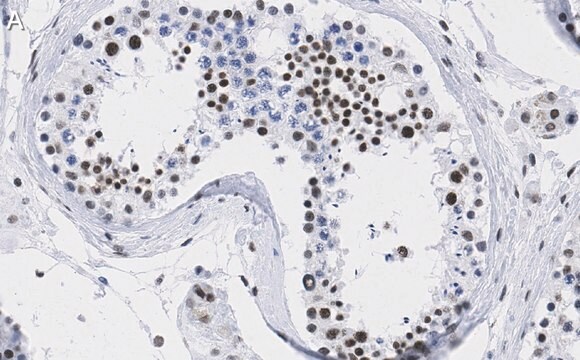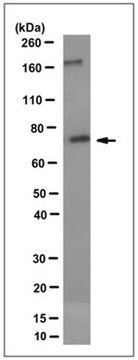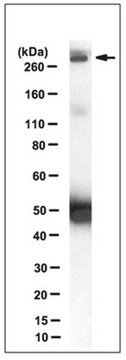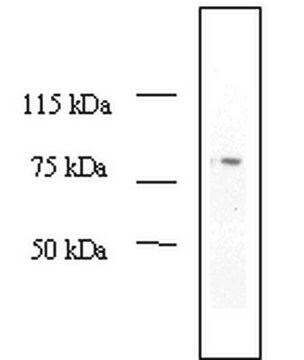MABF956
Anti-Mouse CD36 Antibody, Clone 63
clone 63, from mouse
Sinónimos:
Glycoprotein IIIb, GPIIIB, PAS IV, PAS-4, Platelet glycoprotein IV, GPIV, CD antigen CD36
About This Item
Productos recomendados
biological source
mouse
Quality Level
antibody form
purified immunoglobulin
antibody product type
primary antibodies
clone
63, monoclonal
species reactivity
mouse, rat
technique(s)
flow cytometry: suitable
inhibition assay: suitable
isotype
IgAκ
NCBI accession no.
UniProt accession no.
shipped in
ambient
target post-translational modification
unmodified
Gene Information
mouse ... Cd36 (12491)
General description
Specificity
Immunogen
Application
Inhibition Analysis: A representative lot detected Mouse CD36 in Inhibition applications (Patel, S.N., et. al. (2004). J Infect Dis. 189(2):204-13).
Quality
Flow Cytometry Analysis: 1 µg of this antibody detected CD36 in one million RAW264.7 cells.
Target description
Physical form
Other Notes
¿No encuentra el producto adecuado?
Pruebe nuestro Herramienta de selección de productos.
Storage Class
12 - Non Combustible Liquids
wgk_germany
WGK 2
flash_point_f
Not applicable
flash_point_c
Not applicable
Certificados de análisis (COA)
Busque Certificados de análisis (COA) introduciendo el número de lote del producto. Los números de lote se encuentran en la etiqueta del producto después de las palabras «Lot» o «Batch»
¿Ya tiene este producto?
Encuentre la documentación para los productos que ha comprado recientemente en la Biblioteca de documentos.
Nuestro equipo de científicos tiene experiencia en todas las áreas de investigación: Ciencias de la vida, Ciencia de los materiales, Síntesis química, Cromatografía, Analítica y muchas otras.
Póngase en contacto con el Servicio técnico